Sunday, September 5, 2010: First working day of week two
The first week of our projects was a rather short one since the Eid Fitr holiday is bringing us in the profit of a long weekend. This is one of the reasons why we tried to speed up a little bit the work at the different sites.
Monday, September 6, 2010: Second working day of week two
On az-Zantur, Bernhard Kolb and Christoph Schneider introduce their youngsters, Sebastian Hoffmann and Thomas Kabs, to the many secrets of the site. This season’s activities are mainly focusing on the agricultural structures discovered underneath the huge Nabataean mansion and belonging to a previous phase. Getting down to bedrock is their motto since these early structures are directly cut into the rock. At least, this prevented them from being completely destroyed by the later construction of the luxurious Nabataean mansion.

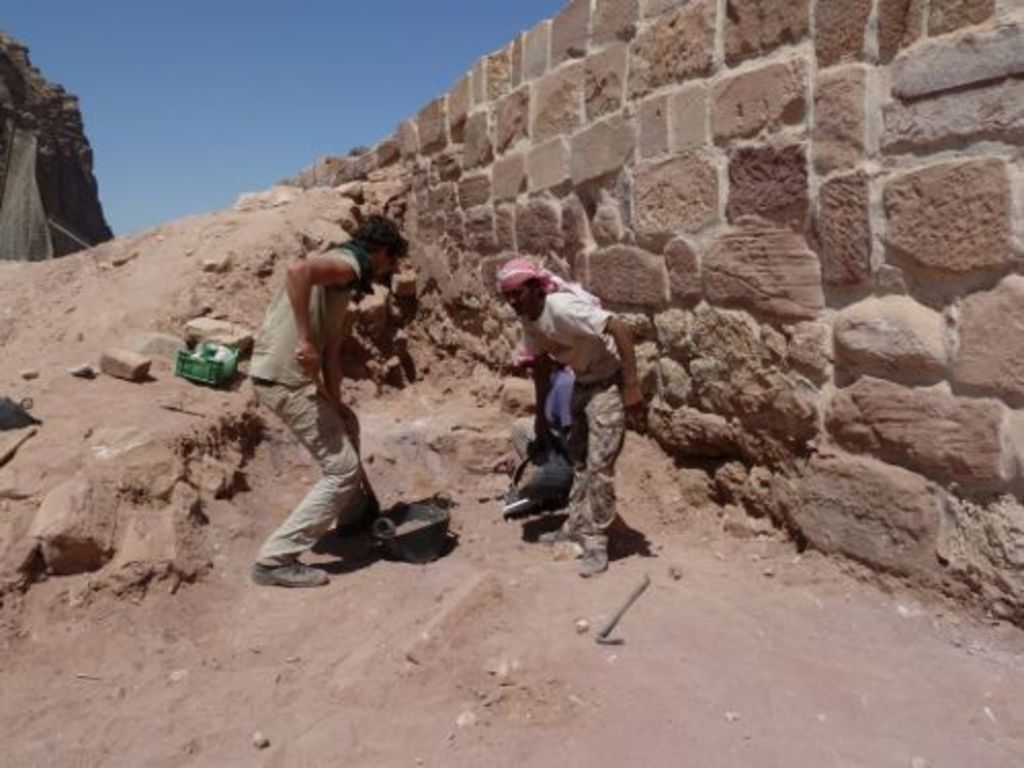
Tuesday, September 7, 2010: Third working day of week two
The small team around Lucy Wadeson, excavating in- and outside the tombs BD 779 and BD 781 at the foot of the Khubta hill was completed September 6 when Maxie Haufe finally arrived, flying in from an international conference she was attending at Den Haag. Driving back to Amman almost every second day, be it to collect people from the airport be it to try to get our Total Station through customs, Stephan Schmid starts knowing all the truck stops on the Desert Highway, something he always wanted to do the past 20 years or so but never had the time… Anyway, with Maxie Haufe’s arrival the real tasty stuff could start, i. e. the excavation of the shaft tombs inside BD 779 and 781. Nobody struggles better with the many interesting layers of goat dung inside the tombs as she does!


Wednesday, September 8, 2010: Fourth working day of week two
According to the latest news from the many offices involved in getting a Total Station into the country, we might be able to get ours by the beginning of the next week. In the mean time, we rented one from CBRL Amman. However, as is often the case with these technical equipments, it is not the same model and, therefore, Guido Teltsch, head of the happy mapping team, has to struggle in order to get things fit. Fortunately, we always can count on our man from Leica in Berlin, Mr. Sebastian Dietrich who always kindly answers our desperate phone calls (even Sunday morning at 7 o’clock!)
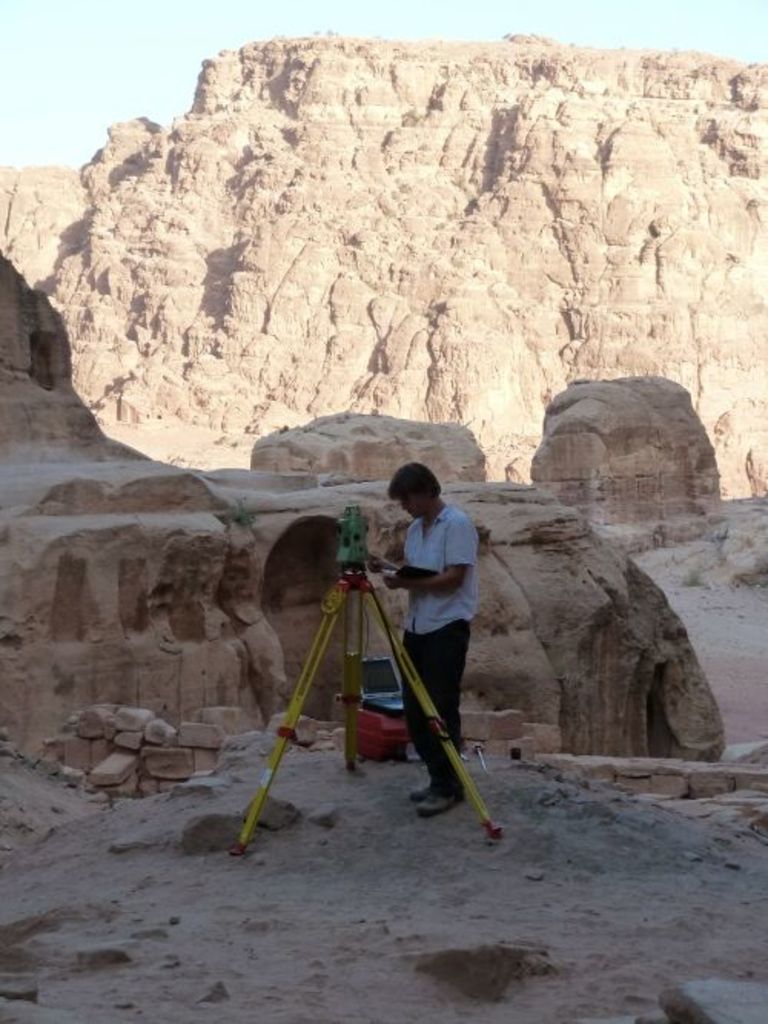
Thursday, September 9, 2010: Fifth working day of week two
In the Wadi Farasa East, the Soldier’s Tomb complex once again is the object of a short season. The only area of the area where no excavations took place since our first season in 2001 is the sector of the presumed upper entrance to the complex. In order to find out how exactly this entrance situation was handled, two squares shall be excavated this year. Will Kennedy, Karin Petrovskzy and Guido Teltsch (if the Total Station allows) are taking care about this area. Since everybody, including the workmen, are well aware of the considerable amount of sand to be moved, the working rhythm is at its highest level.
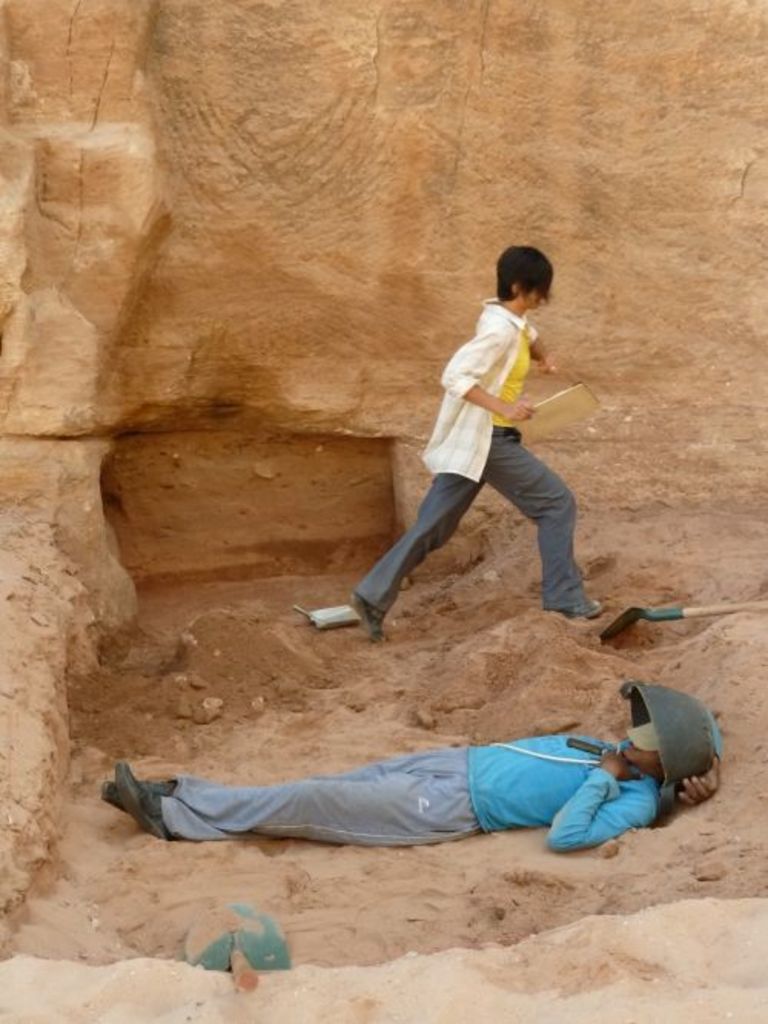
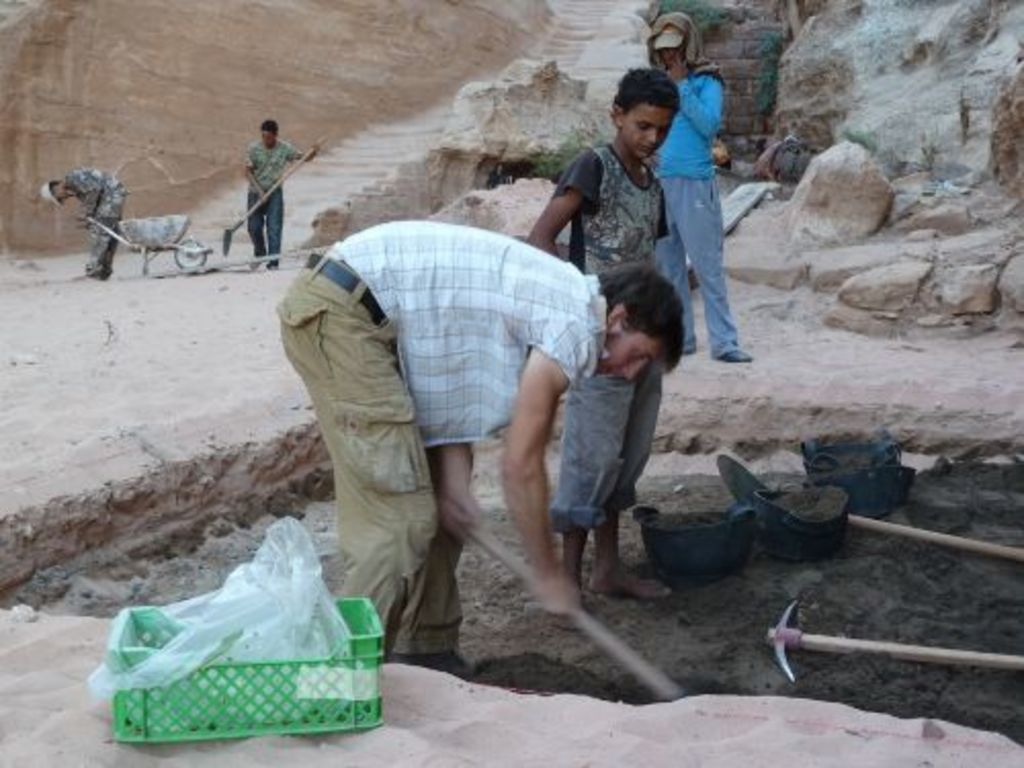
Although this season in Wadi Farasa has to be realized without the help of André Barmasse (did we already mention this?), we try hard to keep up several of his working traditions. Therefore, although just cleaning the surface, Karin Petrovszky and her team came across the huge entrance to a – presumably veeeery big – rock hewn cistern at the very first day.
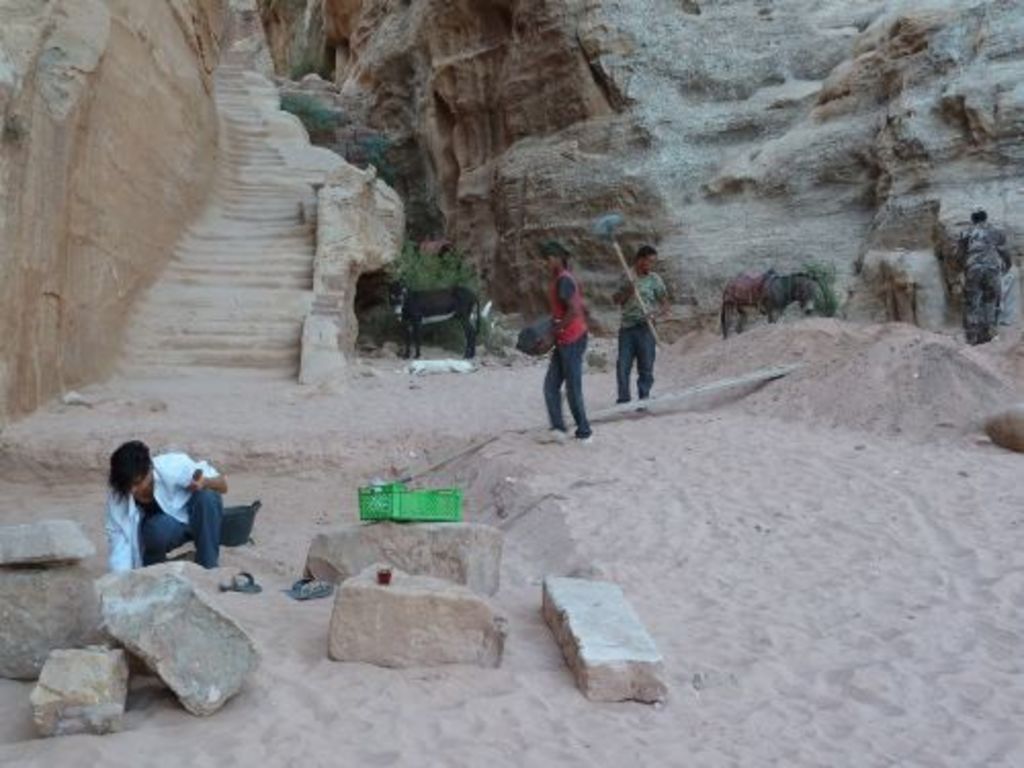
Friday, September 10, 2010: First day of the week-end
During the long weekend of Eid Fitr, work had to go on in one way or another since this autumn’s program is so tight that no longer interruption is possible. Therefore, and since our workmen of course had their days off, everybody from the team not only was working, but during the weekend people from one project helped their colleagues from other projects out, according to where the workload was at top level from day to day.

This is how part of the archaeologist came to profit of a one day trip with the geographers around team leader Brian Beckers, working in the Bayda area. Their goal is surveying and sampling terraces and water systems, probably used for agricultural purposes from the Nabataean period onwards. Although also working in the earth and with layers, the approach is a completely different one and, therefore, the archaeologists learned a lot about river deposits, doing OSL sampling and other stuff, far too complicated to be remembered.


Saturday, September 11, 2010: Second day of the week-end
The next day it were the geographers laboring at the archaeological sites, more specifically at Wadi Farasa, where Stephan Schmid defined this season’s work as follows: one meter per week – downwards… Interrupted regularly by a highly complicated stratigraphy as well as appearing structures that need both a lot of drawing and taking measurements for documentation, this rhythm can only be maintained when working almost daily in double shifts. Fortunately, the well trained geographers were responsible for a considerable acceleration.



